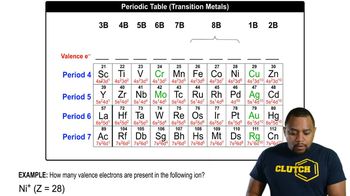Choose the larger atom in each pair.
(d) N or S
 Verified step by step guidance
Verified step by step guidance Verified video answer for a similar problem:
Verified video answer for a similar problem:



 1:44m
1:44mMaster The difference between atomic numbers and atomic mass. with a bite sized video explanation from Johnny
Start learning